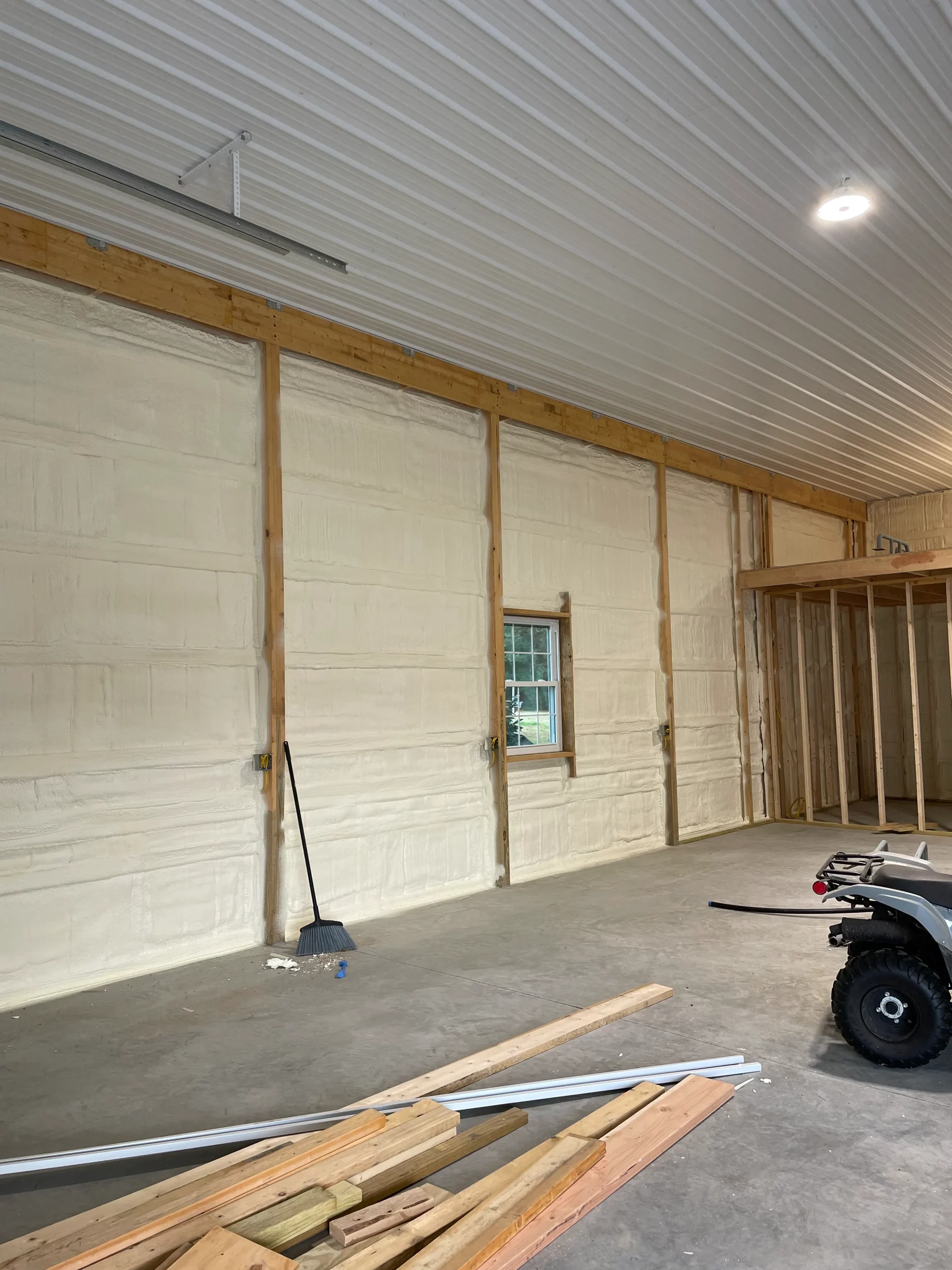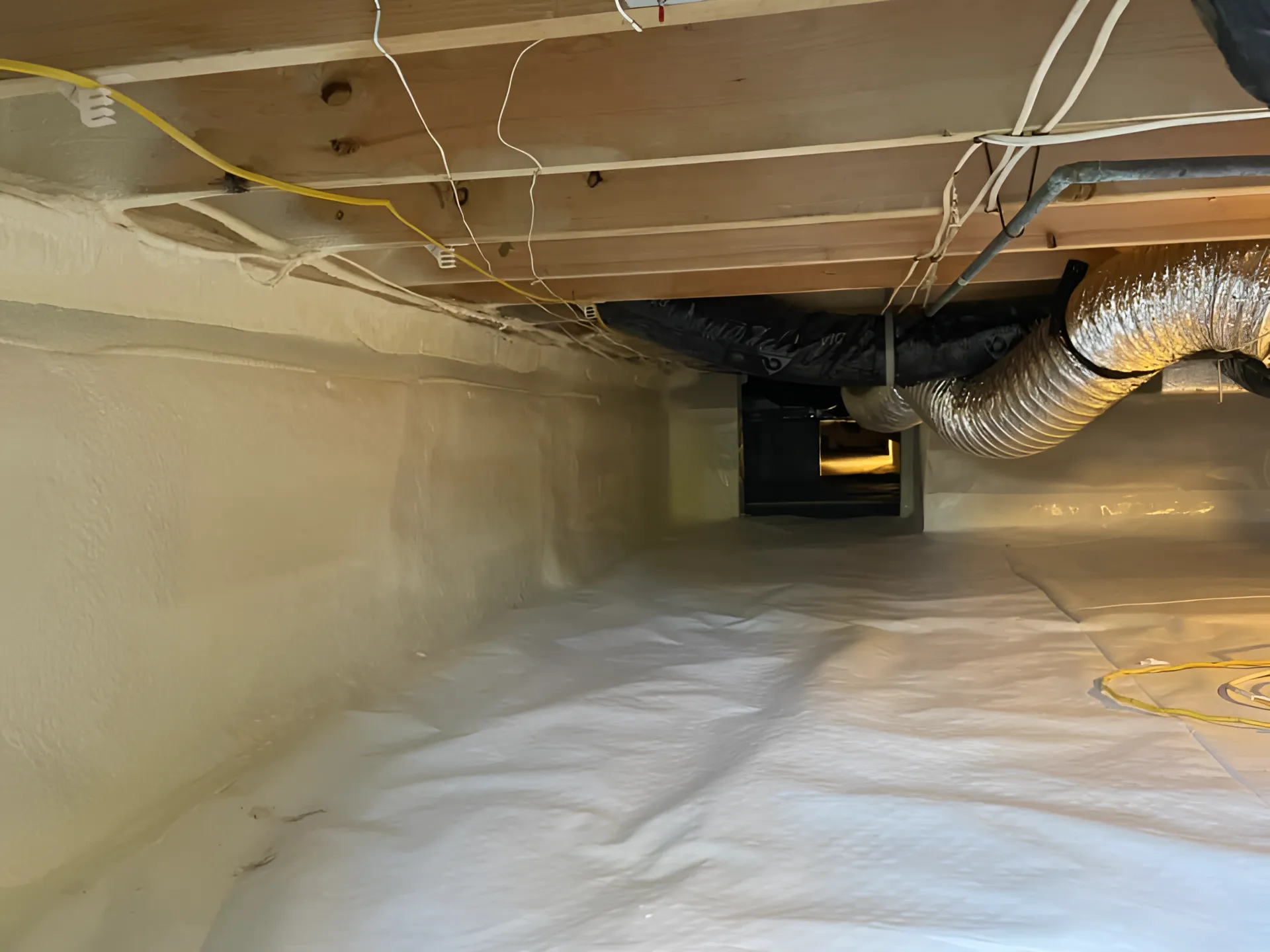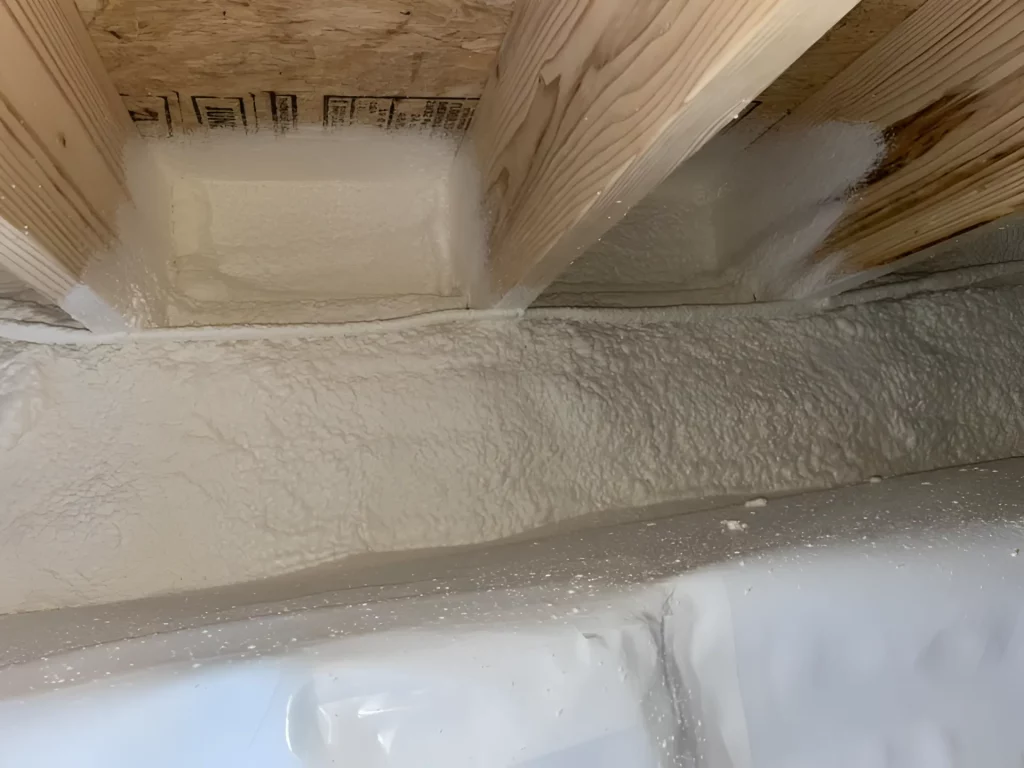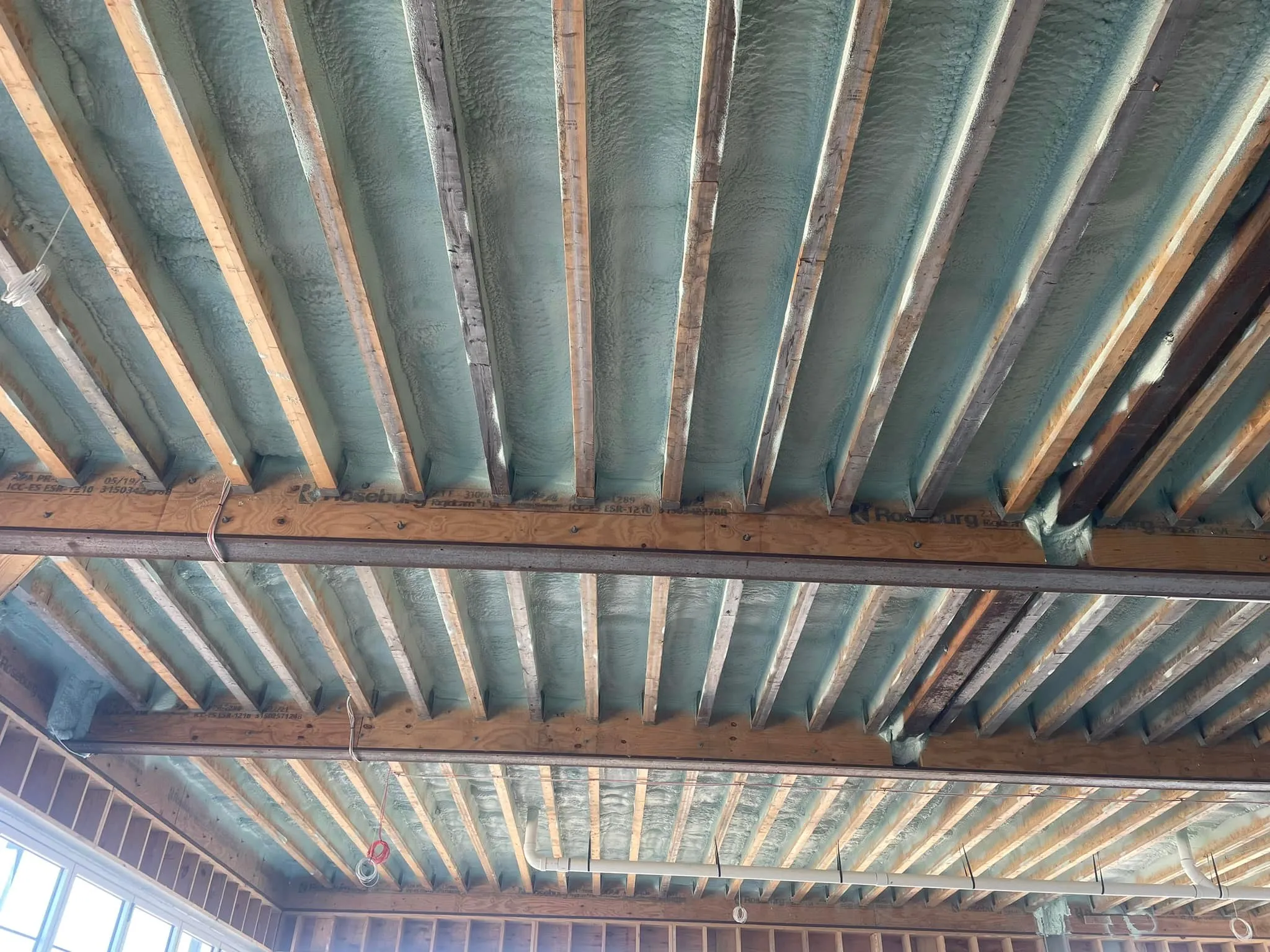

A sealed, or encapsulated, crawl space directly protects your family from allergens by creating an impermeable barrier between the damp earth and your home’s living environment. This process stops moisture, which is the primary fuel for mold growth and dust mite infestations. By controlling humidity and sealing off vents and gaps, encapsulation prevents these common allergens, along with pollen and pest droppings, from entering your home through the natural upward flow of air from your home’s lower levels. The result is cleaner, healthier indoor air and a significant reduction in triggers for asthma and allergies.
This article will explain the connection between your crawl space and your home’s air quality, detailing how specific allergens flourish in traditional vented crawl spaces and how encapsulation solves the problem. The information here is based on extensive field experience in correcting home air quality issues that originate below the living space.
For decades, building codes required crawl space vents with the idea that they would allow moisture to escape. Unfortunately, in many climates, these vents do the opposite. In humid regions, warm, moist air enters the cool crawl space, where the moisture condenses on surfaces like floor joists and ductwork. This creates a perfect breeding ground for mold and mildew.
A report from the U.S. Environmental Protection Agency (EPA) explains that mold exposure can cause symptoms like nasal stuffiness, eye irritation, wheezing, or skin irritation in sensitive individuals. For people with serious mold allergies, the reactions can be more severe. By allowing constant entry of humid air, vented crawl spaces often become the primary source of mold spores circulating throughout a home.
Crawl space encapsulation is a comprehensive solution that isolates your home from the ground and outside air. The process typically involves:
Encapsulation directly targets the sources of several major indoor allergens that thrive in damp, dark environments.
Mold needs two things to grow: organic material (like the wood structures in your crawl space) and moisture. A vented crawl space provides a steady supply of moisture. Encapsulation removes this key ingredient. By stopping water vapor from the ground and humid air from the outside, the environment becomes too dry for mold spores to activate and grow.
Dust mites are microscopic creatures that are a leading trigger for year-round allergies and asthma. They don’t drink water; instead, they absorb moisture from the air. According to the American Lung Association, dust mites cannot survive in environments with humidity levels below 50%. A properly sealed and conditioned crawl space keeps humidity well below this threshold, effectively eliminating dust mite populations that would otherwise thrive in the space below your home.
Open vents act as a direct entry point for pollen, dust, and other outdoor pollutants. During high pollen seasons, these allergens can be pulled into the crawl space and then circulated into your home. Sealing the crawl space also creates a physical barrier that prevents insects and rodents from entering. This eliminates another source of allergens in the form of pest droppings and remains.

The “stack effect” is a principle of building science that describes how air moves through a house. Warm air rises and escapes through the upper levels of the home, creating a slight vacuum that pulls air in from the lower levels. The U.S. Department of Energy notes that this process can draw a significant amount of air from the crawl space up into the living areas. If your crawl space is damp, moldy, and filled with allergens, the stack effect ensures that you and your family are breathing that contaminated air. Sealing the crawl space purifies the air at its source, leading to healthier air throughout the entire home.
The differences between a traditional and a sealed crawl space are stark, especially regarding factors that affect your family’s health.
| Feature | Vented Crawl Space | Sealed (Encapsulated) Crawl Space |
|---|---|---|
| Moisture Control | Poor. Allows humid air to enter and condense. | Excellent. Blocks ground moisture and outside air. |
| Allergen Level | High. Fosters mold, dust mites, and allows pollen in. | Very Low. Creates an environment hostile to allergens. |
| Air Quality | Poor. Air is often damp, musty, and full of spores. | Good. Air is clean, dry, and controlled. |
| Pest Access | Easy. Vents and gaps provide simple entry points. | Blocked. All entry points are sealed. |
| Energy Efficiency | Low. Unconditioned air makes HVAC systems work harder. | High. Creates a conditioned buffer zone under the home. |
While the benefits are clear, a successful encapsulation project requires careful planning.
Before proceeding with crawl space encapsulation, you should evaluate a few key factors to ensure the solution is effective and durable.
Bonus Tip: Check your ductwork before sealing the crawl space. Leaky ducts in a vented crawl space pull in dirty air and distribute it throughout your home. In a sealed crawl space, they pull conditioned air out, wasting energy. It’s best to have any duct leaks repaired during the encapsulation process.
Sealing your crawl space is one of the most effective actions you can take to improve your home’s indoor air quality and reduce your family’s exposure to common allergens. By stopping moisture and pollutants at the source, you create a healthier living environment. Before making a decision, it’s wise to assess your crawl space’s current condition, consider your local climate, and understand that this is a long-term investment in your property and your family’s well-being.
If you’re concerned about your home’s air quality and suspect your crawl space might be the cause, it’s best to get an expert opinion. A qualified local professional can provide a thorough assessment and recommend the right solution for your home’s specific needs.
A sealed and insulated crawl space can lower your energy bills. It creates a semi-conditioned buffer between your home and the ground, reducing the workload on your heating and cooling system. Your HVAC equipment no longer has to fight against extremely hot or cold air coming from the crawl space.
Simply laying a plastic sheet on the ground is just installing a basic vapor barrier. Full encapsulation is a complete system. It includes laying a heavy-duty, sealed vapor barrier on the floor and walls, sealing all vents and air leaks, and adding a dehumidifier to condition the air.
While some homeowners attempt a DIY approach, it’s a difficult and physically demanding job. Achieving a perfect, airtight seal is challenging without professional tools and experience. Mistakes can trap moisture and lead to worse problems than you started with.
A professionally installed, high-quality vapor barrier (12-20 mil) should last for the life of your home. It’s made of inert materials that do not break down or decay over time.
In most cases, yes. Even a perfectly sealed crawl space can experience slight increases in humidity from various sources. A dehumidifier is the only way to guarantee that the relative humidity stays below the 50% threshold needed to stop mold and dust mites.


